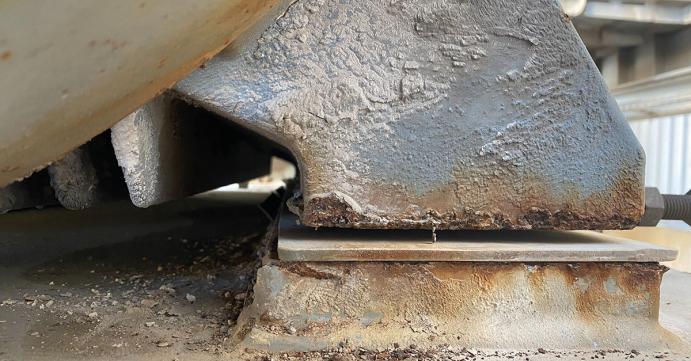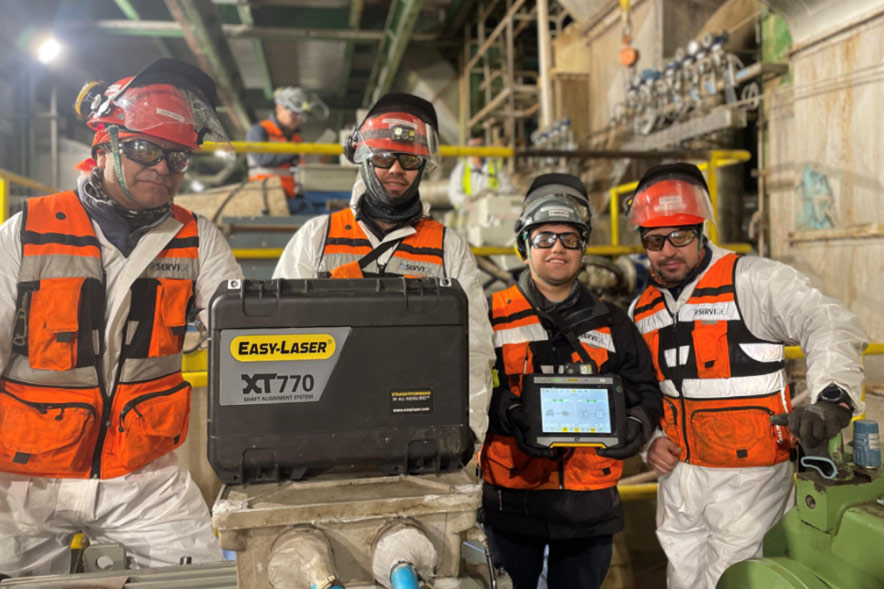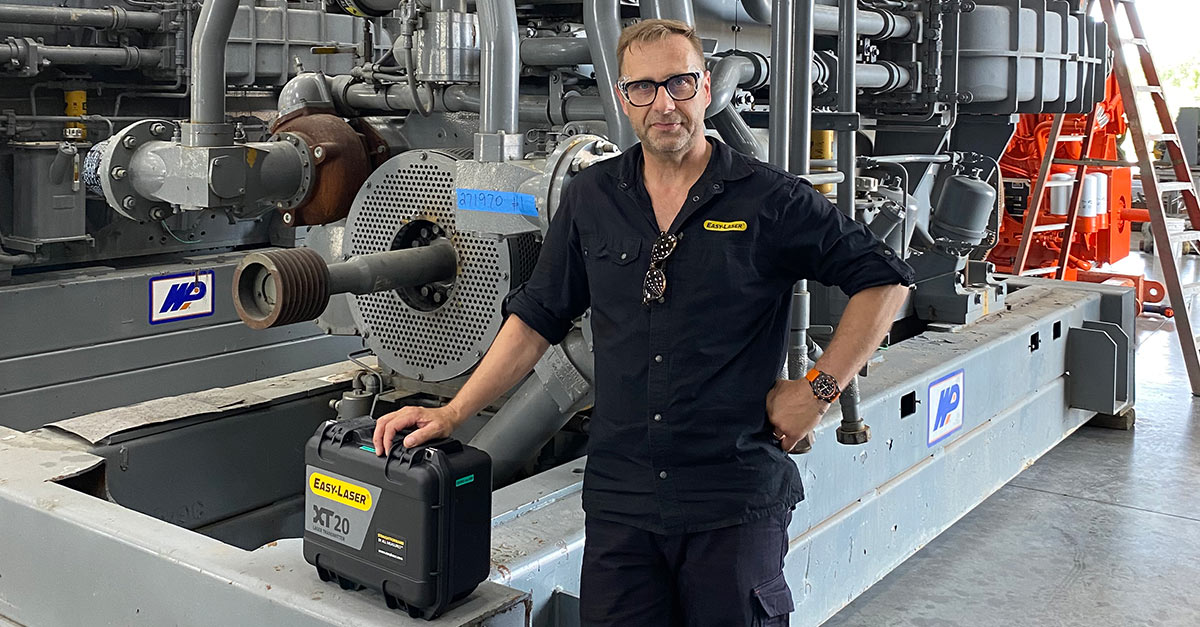By soft foot, we mean that the machine is not resting evenly on all feet. Another expression you may have heard is machine frame distortion.
Why do we need to check and correct soft foot? Can it be that big a problem if there is a tiny gap underneath one machine foot or a little pile of dirt under another? Well, yes. Because if the machine is not standing perfectly flat on the machine base, you can (and most likely will) run into problems such as shaft deflection, increased vibrations, bearing failure – and, in the end, machine breakdown. And that will be a lot more expensive than fixing the soft foot problem in the first place! Luckily, all Easy-Laser shaft alignment systems come with a program for soft foot check that tells you which feet you need to adjust and how much.
There are four types of soft foot which all have one thing in common: one or more feet are not resting firmly on the machine base. And there are different reasons for that. So, let's take a look.
1. Parallel soft foot
Parallel soft foot (sometimes also referred to as rocking soft foot) means that not all four feet are on the same plane. Think of a wobbly table at a restaurant, where you can rock it back and forth. In this case, the laser system software will show high readings (>0,05 mm) for soft foot at opposite corners. With a feeler gauge, you can determine which foot or feet you need to shim and how much.
There are three possible reasons for parallel soft foot:
- The leg is too short.
- The base plate or mounting pads are not coplanar.
- Missing shims under one or more feet.
To correct parallel soft foot, you add enough shims to remove the rocking effect (use as few as possible, and no more than four shims!).
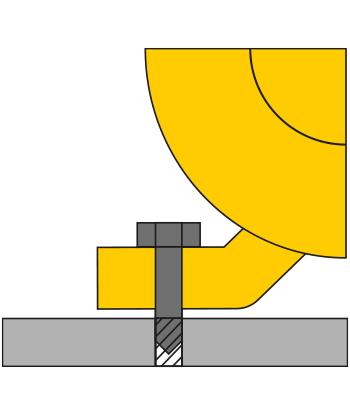
2. Bent foot / outside angled soft foot:
This is a common type of soft foot that occurs when the foot's bottom is at an angle relative to the base. In this case, the laser system will show a high soft foot reading at three or four feet. The foot with the highest soft foot reading will show a tapered air gap from one corner of the foot to another.
There can be several reasons for this condition, for example:
- The machinery has been dropped or roughly handled.
- The base plates are bent or poorly machined.
- There's a severe vertical angular misalignment.
- The feet are welded.
- Foundation settling has occurred.
The best way to correct this problem is to re-machine the feet, the base, or both. If this is not possible, step-shimming is an option (although you should try to avoid it).
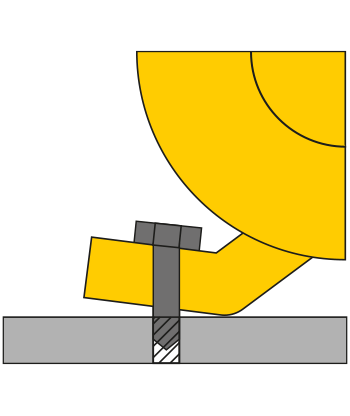
3. Squishy foot:
Squishy foot is sometimes also known as spring foot. With squishy foot, the feeler gauge won't detect any gap underneath the foot. Instead, the problem is usually that the space between foot and base is filled with too many shims from a previous attempt to fix soft foot. There may also be a build-up of other unwanted material such as dirt or rust under the foot.
Reasons for squishy soft foot may be:
- Dirt, grease, paint, or rust between the foot and the base.
- Too many shims (remember, you should not use more than four shims per foot).
- Bent shims.
- Shims with burrs or thread marks.
To get rid of this problem you need to thoroughly clean the area around and underneath the foot, and replace old shims with new, crush-resistant ones.
Here you can read more about shimming best practices.
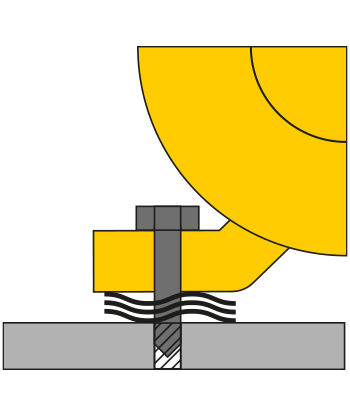
4. Induced soft foot:
Induced soft foot is caused by external forces that affect the machine frame, and it can be hard to detect. The laser system will indicate more than one soft foot, usually on the same side or the same end of the machine. The feeler gauge will find a gap, usually parallel or nearly parallel.
Some possible causes of induced soft foot are:
- Coupling or pipe stress.
- Overhung machines.
- Belts or chain loads on pulleys and gears.
- The flex conduit is excessively rigid.
- Structural bracing is attached to the machine.
- The jacking bolts are inadvertently left tight.
To correct induced soft foot, you need to remove the external forces that cause the problem. This may require more than one soft foot check since these forces can occur anytime during the shaft alignment process.
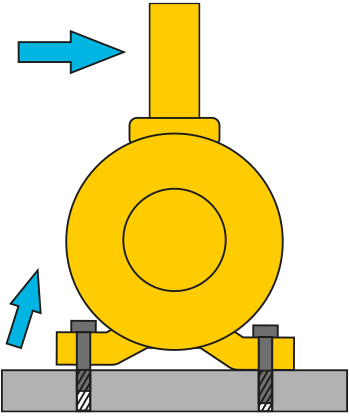
One step closer to trouble-free operation
Like we said in the beginning of this article: to correct soft foot is essential. No machine is designed to work under stress or with a high level of vibration, which are consequences of soft foot. So, make sure all feet are placed firmly on the ground (or base, in this case) and you have created the best possible conditions for perfect shaft alignment and trouble-free operation!

